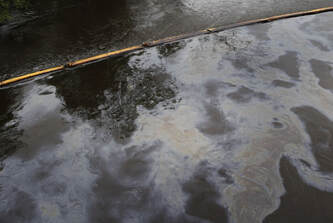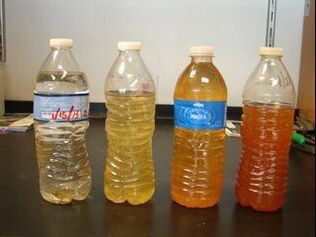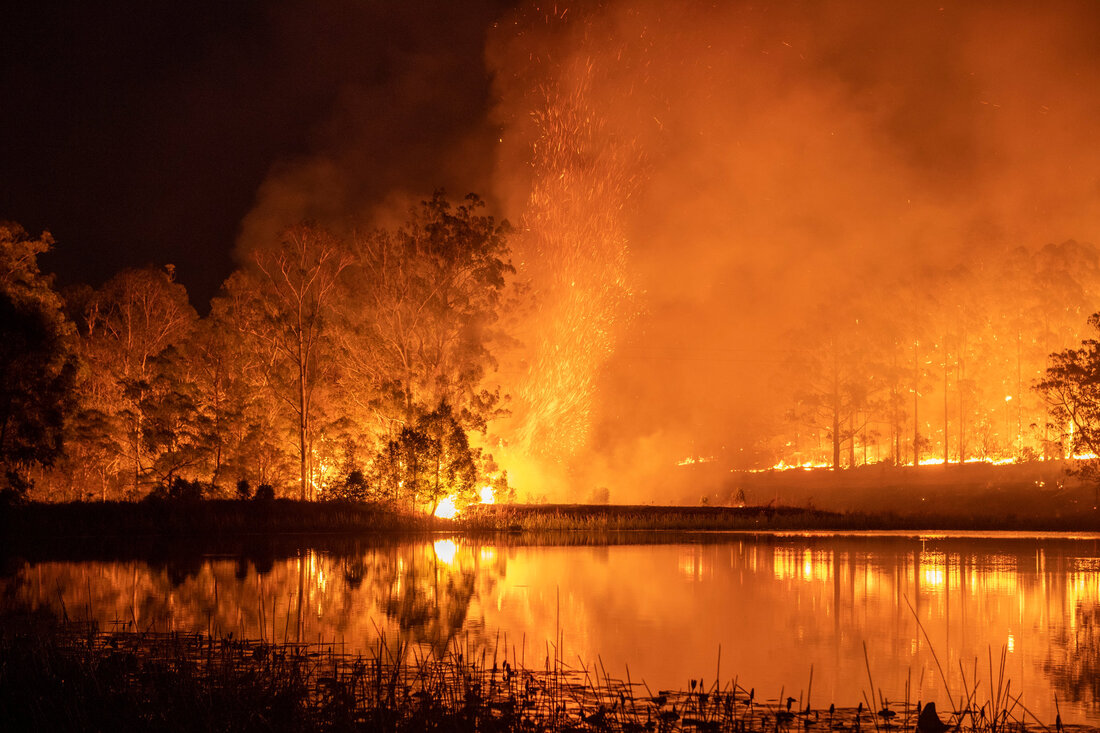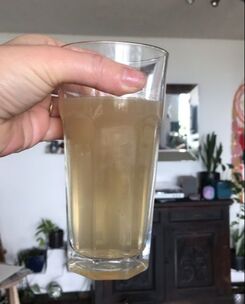|
Clean water is a luxury often taken for granted by those of us living in a developed or high-income country. We expect the water that gushes from our taps to always be safe and clean; we don’t expect to face water shortages or to be required to purchase filters. We simply live without fear of getting sick from our water. However, while water contamination might seem like a distant issue, confined to Sub-Saharan Africa or under-served communities in South East Asia, we’re here to prove otherwise. Read on as we explore some of the biggest instances of water contamination in developed countries, highlighting that water insecurity is a concern relevant to us all LEAD CONTAMINATION FLINT, MICHIGAN, UNITED STATES OF AMERICA (USA) Perhaps the most well-known occurrence of lead-poisoned drinking water occurred in Flint, Michigan, a city that has been battling severe water contamination since 2014. The saga first began when city officials made the decision to source water from the nearby Flint River, as a cheaper alternative, instead of using treated water from the Detroit municipal water system. As a historical dumpsite for nearby factories, the Flint River was not an ideal choice for sourcing water, and the shortcomings of this decision were quickly exposed. Within weeks, residents complained about the deteriorating quality of their water, the most concerning of which was the physical appearance of the water itself. Murky and brown, the water was eventually identified to contain a slew of contaminants, including bacteria. To combat this, city officials doubled the amounts of chlorine disinfectant which resulted in an entirely new problem altogether. As water with high amounts of chlorine moved through the aged pipes, the chlorine particles began corroding the lead in the pipes and its plumbing components, delivering gallons of lead-contaminated water to numerous homes in Flint. Lead is a neurotoxin and reports show that exposure to lead-contaminated water can affect children’s development and cause damage to the brain, slowed growth and behavioral issues.
HONG KONG Unfortunately, a lead pollution crisis like the one in Flint is not an isolated incident. In 2015, Hong Kong experienced similar issues of elevated lead levels in their water supply. The nationwide scandal first gained traction when a housing estate in Kowloon reported lead levels up to 80 times higher than the level recommended by the World Health Organization (WHO) . As a result, three residents reported having excessive levels of lead in their bodies, almost three times higher than the safe level stipulated by WHO. As the scale of lead-poisoning became more widespread, Hong Kong residents grew increasingly upset, especially when discovering that several primary schools were also affected. As previously stated, lead is especially damaging to young children as it can cause permanent damage to their brain and nervous system. The source of the contamination is still unknown, as city officials blame contractors for utilizing components of pipes containing lead. The elevated lead levels in tap water continued to surface as recently as 2018, however general unrest has been placated. MULTIPLE CITIES, CANADA In 2019, multiple cities in Canada experienced lead water contamination as well. The discovery was a result of a year-long investigation by 120 journalists from different media outlets and universities. The group conducted 12,000 tests measuring lead-levels in tap water across multiple cities. These cities include Montreal, Regina and Prince Albert. The investigations discovered one-third of the tap water samples measured higher than Canada’s safe limit. Many experts have compared the direness of the situation to Flint’s, with lead levels reaching up to 120 times higher than the federal health guideline in the city of Edmonton. Like Flint, the source of this water contamination may be traced back to the continued usage of antiquated lead pipes and pipes with lead components. A separate report by a federal parliamentary committee recently estimated that 500,000 Canadian homes still use such lead pipes and are possibly consuming water with elevated levels of lead content. The good news is that various cities have promised to act, with each city approaching the situation differently. In Montreal, Mayor Valerie Plante has stated that the city will start removing lead pipes both on the public and private side of property lines. As for cities in British Colombia, the Health minister Arian Dix has acknowledged the issue and has assured residents that the city is investing money to help improve water treatment processes. We find comfort in the fact that these officials seem aware of the complexities of this issue which may hopefully inspire them to exercise greater caution when developing a solution to prevent any impulsive action that may aggravate the situation further, like in Flint Michigan. BUSHFIRE, AUSTRALIA Even in developed countries, an omnipresent threat to clean water is the occurrence of natural disasters. Disasters can uproot populations, damage water supplies, and lead to contamination of water sources.
In addition to the short-term risks of water contamination by bushfire, long lasting implications include contamination of freshwater sources and water catchment areas from the bushfires. Burnt vegetation leaves behind soot and ash, and can be carried by heavy rainfall into waterways and freshwater sources. Besides the obvious contamination of suspended particles, runoff may also cause algal blooms. The debris of charred flora carry rich amounts of phosphorus and nitrogen, nutrients that microorganisms known as cyanobacteria flourish on. With an increase in such nutrients, cyanobacteria will be able to grow and reproduce at rapid rates in what is known as an algal bloom. Beyond disrupting the natural biodiversity of an area, the cyanobacteria also have adverse effects on human health. They cause water to smell and taste bad and might even produce harmful liver toxins known as microcystins. While boiling water will kill the bacteria, the toxins may still be harmful. City officials are working hard to minimize the impact of bushfire damage. Some of these strategies include setting up barriers along reservoirs to catch big debris as well as building silt curtains at dams to reduce sediment entering treatment facilities that may clog the filters  Image from UPI.com Image from UPI.com OIL SPILL, CANADA Despite its environmental impact, many developed countries continue to maintain a heavy reliance on oil and fossil fuel. The use of these resources carry huge risks, the biggest of which is oil spills. Although oil spills largely occur in a salt-water or marine environment, they have and do affect freshwater sources which in turn contaminate drinking water. In July of 2016, residents in the Canadian province of Saskatchewan suffered the “most significant [environmental] incident that ever happened in [their] province”. A pipeline owned by Husky Energy Inc. broke while transporting heavy oil, spilling 225,000 gallons of heavy oil into the North Saskatchewan River. The river was then further contaminated with natural gas as authorities attempted to dilute the heavy oil. The impacts of this oil-spill were far reaching and devastating as three communities use the North Saskatchewan River as a water source. In the city of Prince Albert, city officials shut down the city’s water treatment plant and residents had restricted water usage for the entire summer. In the city of North Battleford, residents relied on water piped from nearby towns until November 2016, while the Saskatchewan Hospital’s Mental Health Facility had no water for almost two months. Husky Energy Inc. eventually pleaded guilty to permitting the spill and were charged a total penalty of $3.8 million CAD. City Officials are still continuing expensive reparation works with costs exceeding $8 million in Prince Albert alone, double the penalty-fee already. The quality and efficiency of the cleanup by Husky Energy Inc. have also been brought into question. As late as 2019, residents have stated that cleanup efforts have been inadequate and incomplete, with representatives from North Battleford stating that drinking water continues to be affected. CONCLUSION As you can see, even with its advancements, water contamination continues to be a prevalent and difficult challenge for even high-income countries. Can you imagine how much more extreme these issues would be in a low income context, without access to bottled water as an immediate intervention. Without proper and reliable infrastructure, the issue of clean water provision is extremely severe, particularly for rural areas and disaster-prone regions. Because of this, we at Wateroam continue to innovate and develop solutions that bypass the need for heavy infrastructure. If you would like to support our efforts in ending prolonged thirst, you can contribute to our cause here. Blog Author: Juliano Prastyo
Chief Editor: Michelle Falcone
0 Comments
|
Want more?Click below to see what other blog topics might peak your interest



Social Awareness Blog Archives
August 2022
|
- About Us
- Products
- Solutions
- Resources
- Get Involved
-
Blog
- The Global Water Situation
-
Facts about Water
>
- Water supplies for crisis
- WaSH During Emergencies
- Well Water Cleaning and Filtration Guide: Southeast Asia
- Gravity-fed Water Systems: Water Purification and Filtration setups in Southeast Asia
- A Guide to Rural Rainwater Harvesting and Filtering
- Water Shortages and Their Effect on Children in Rural Schools
- WaSH Planning and Design Framework Resources for Indonesia and the Philippines
- Rural Community Water Supply: Water Systems in Villages
- Info on our Products
- Impact Stories
- Upcoming & Past Events
- Contact
- Store
- About Us
- Products
- Solutions
- Resources
- Get Involved
-
Blog
- The Global Water Situation
-
Facts about Water
>
- Water supplies for crisis
- WaSH During Emergencies
- Well Water Cleaning and Filtration Guide: Southeast Asia
- Gravity-fed Water Systems: Water Purification and Filtration setups in Southeast Asia
- A Guide to Rural Rainwater Harvesting and Filtering
- Water Shortages and Their Effect on Children in Rural Schools
- WaSH Planning and Design Framework Resources for Indonesia and the Philippines
- Rural Community Water Supply: Water Systems in Villages
- Info on our Products
- Impact Stories
- Upcoming & Past Events
- Contact
- Store





.jpg)